Depending on your taste, you can design your garden around a variety of themes, including cottage gardens and modern gardens. But if you love simple lines and an organic and natural feel, you may want to grow a Japanese or Zen-type garden. This garden type uses minimalist forms, well-proportioned plants, and other key principles of Japanese gardening to create a harmonious and relaxed garden oasis.
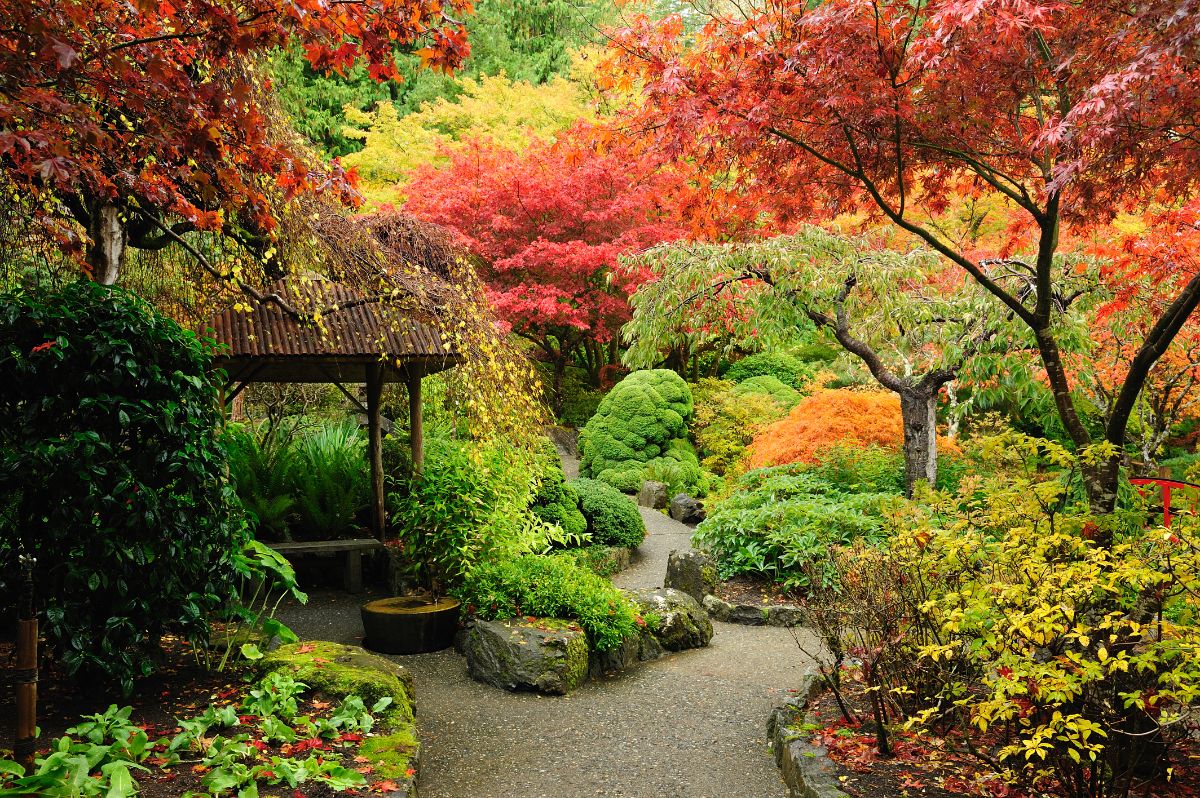
In this guide, we’ll introduce you to some of the best plants to grow in a Japanese-type garden. But before you choose the plants you’d like to grow, it’s a good idea to familiarize yourself with some of the key design concepts that are important in the Japanese garden.
Japanese styles gardens often emphasize:
- A natural feel. Subtle colors are often preferred to bright, bold flowers. Additionally, while some plants may benefit from pruning, pruning is often done carefully to maintain the natural look of the plant.
- Harmony and balance. If bright colors are used in the garden, they are often balanced out by subtle green foliage plants. Similarly, harsh lines of garden walkways can be softened by sowing plants with soft textures nearby.
- Japanese gardens are famous for bestowing a feeling of calm and peace on visitors. Use comfortable seating areas or water features to enhance the feeling of well-being in your garden.
- Four elements. Japanese-type gardens often include 4 important elements: water, rocks, plants, and manmade structures. These elements should all be intentionally balanced to prevent any one element from dominating the landscape.
With these key features in mind, read on to learn more about the best plants to grow in a Zen garden design.
Jump to:
- 18 plants to grow in a traditional Japanese garden
- 1. Japanese maple (Acer palmatum)
- 2. Ferns
- 3. Cherry (Prunus spp.)
- 4. Mosses
- 5. Garden juniper (Juniperus procumbens)
- 6. Ornamental grasses
- 7. Azalea (Rhododendron spp.)
- 8. Hosta (Hosta spp.)
- 9. Bamboo (Bambusa spp.)
- 10. Peony (Paeonia spp.)
- 11. Hinoki cypress (Chamaecyparis obtuse)
- 12. Japanese quince (Chaenomeles japonica)
- 13. Pine (Pinus spp.)
- 14. Iris (Iris ensata)
- 15. Lotus (Nelumbo spp.)
- 16. Japanese wisteria (Wisteria floribunda)
- 17. Japanese boxwood (Buxus microphylla)
- 18. Camelia (Camelliajaponica)
- Summary
18 plants to grow in a traditional Japanese garden
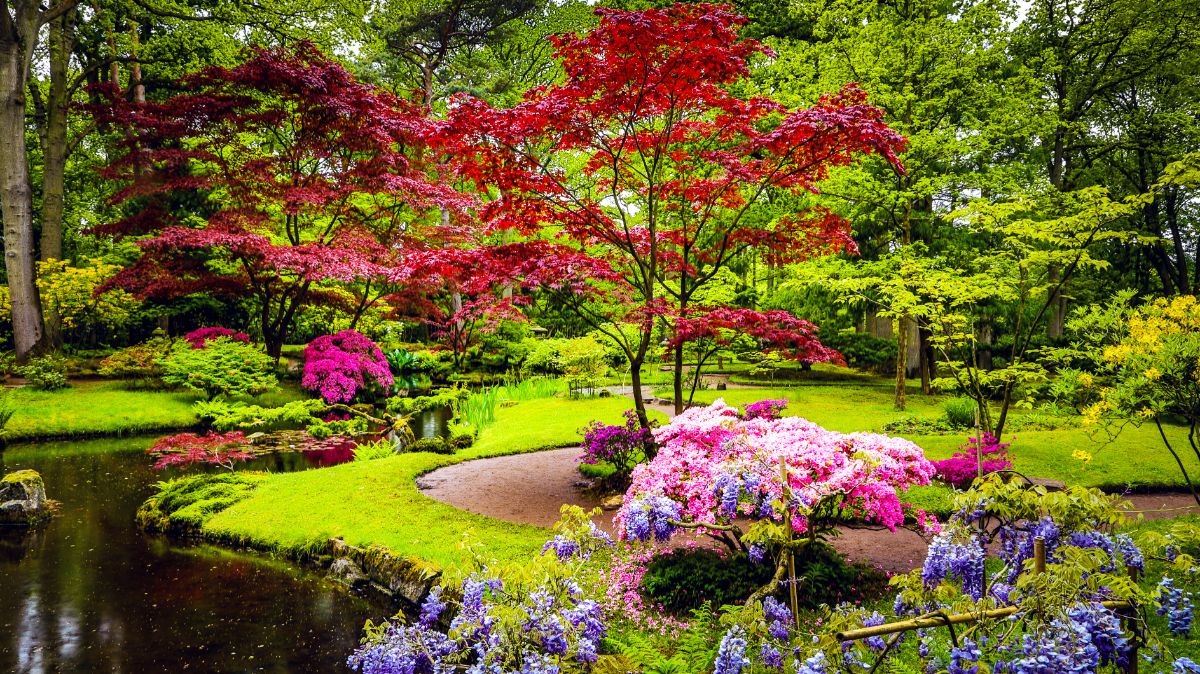
While there are other plants that you can keep in a Japanese-style garden, the plants below are traditional choices that will lend intriguing textures, clean lines, and subtle colors to your landscape. Many of these plants are native to Japan, while other plants were carefully selected with the principles of Japanese gardening in mind. In the list below, you’ll find plants of every shape and size, as well as a few plants that are ideal for extra privacy and several edible specimens too.
1. Japanese maple (Acer palmatum)
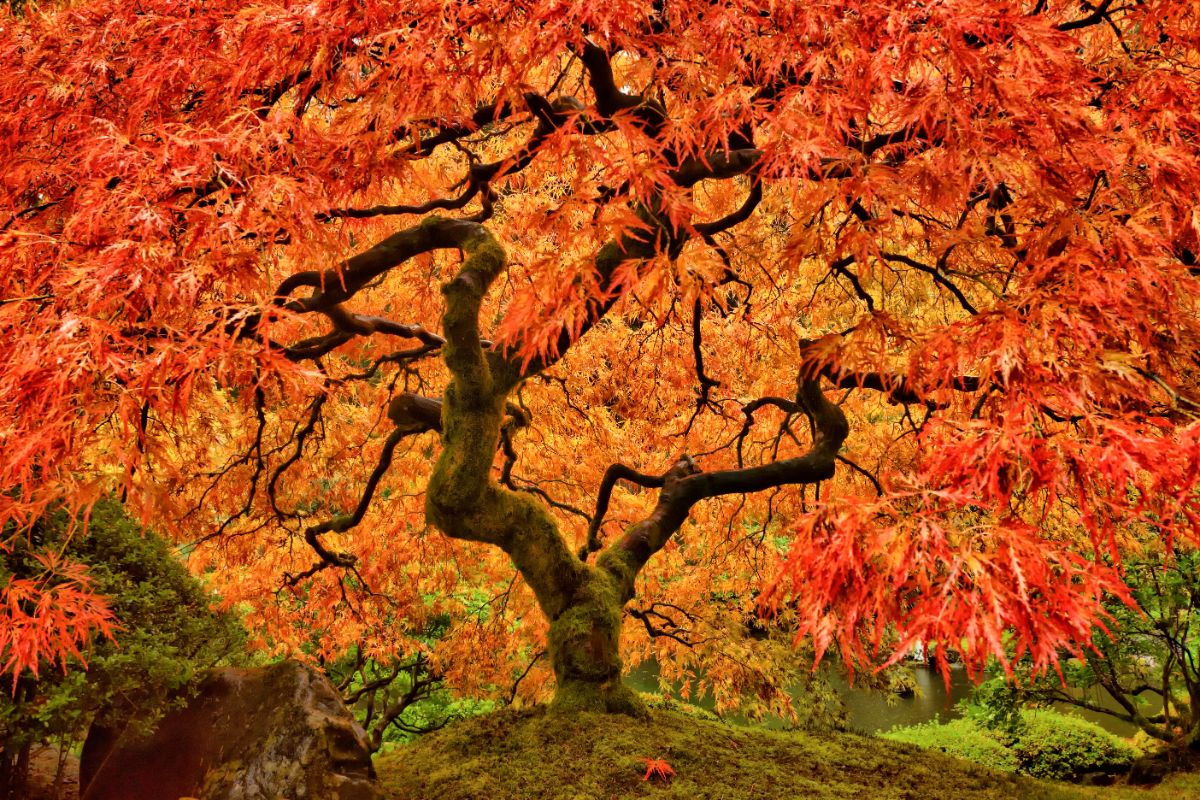
| Plant name: | Japanese maple |
| Lighting requirements: | Full sun to part shade |
| Water requirements: | Moderate |
| Growing zone: | Zones 5 to 8 |
| Special features: | Structural lines; Colorful leaves |
If there’s one plant that can really set the scene and create a lot of impact in a garden, it’s the Japanese maple. This structural, small tree has a slender trunk that often leans a bit to the side and horizontal branches that have a slightly arching shape. But beyond the general shape, Japanese maples are primarily grown for their lacy, palmate leaves that can come in many different colors.
Depending on the aesthetic you are going for, you can find Japanese maples with green, red, yellow, or brown-tinged leaves. These plants are the perfect specimen trees, and they are sure to draw the eye when planted on their own. However, you can also incorporate Japanese maples into garden beds and sow smaller plants beneath them.
2. Ferns
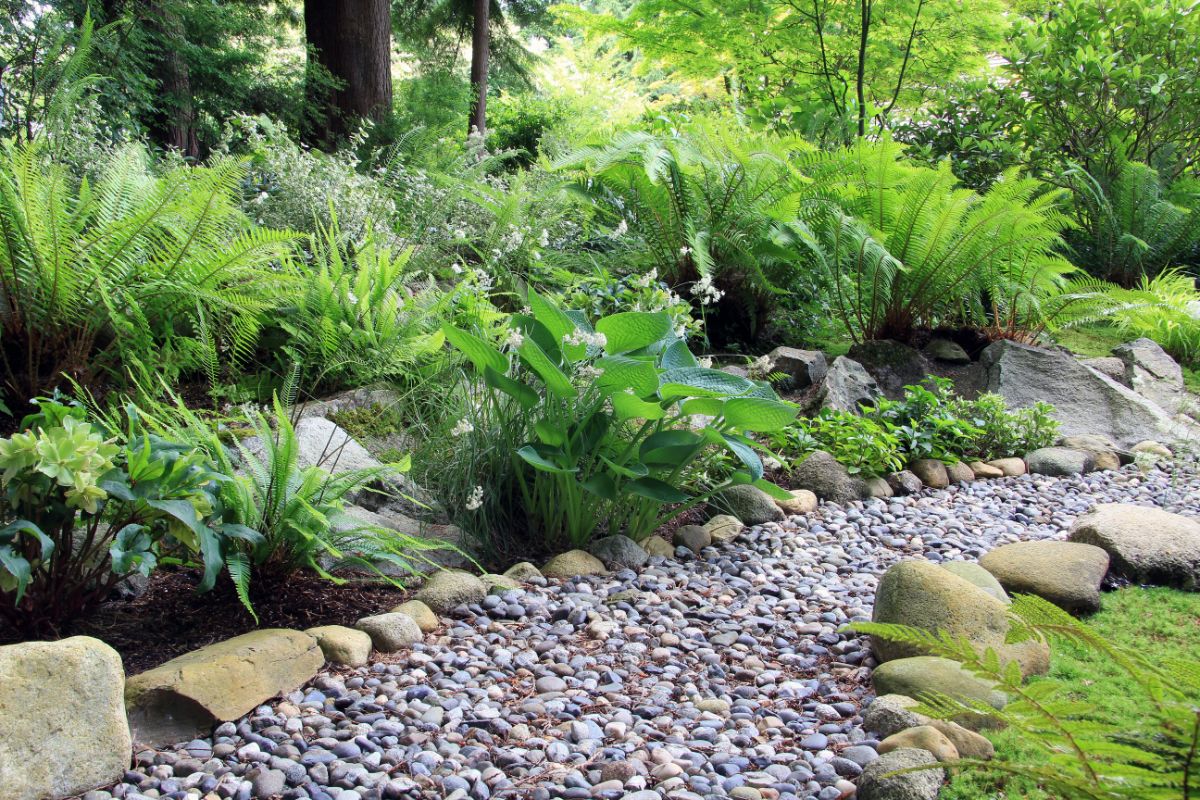
| Plant name: | Ferns |
| Lighting requirements: | Part shade (most varieties) |
| Water requirements: | High |
| Growing zone: | Zones 2 to 10, depending on variety |
| Special features: | Great for shade gardens |
Ferns come in all shapes and sizes, and their vibrant, green leaves will add texture and color to garden beds. When incorporated into landscape designs, ferns can be used to highlight flowering plants or to create a soft bank of green that will allow the eyes to rest during moments of peaceful reflection. These easy-to-keep plants are quite adaptable, and you can find fern varieties that will grow in sun or shade.
Many ferns prefer moist soil, and some can even grow in the slightly acidic soil that occurs beneath some evergreen trees. These characteristics can make ferns a top choice to grow in shade gardens, and they are also small enough to keep in small spaces and container gardens. If you want to get even more use out of your fern plants, try keeping ostrich ferns, which produce edible fiddleheads in spring!
3. Cherry (Prunus spp.)

| Plant name: | Cherry |
| Lighting requirements: | Full sun |
| Water requirements: | Moderate |
| Growing zone: | Zones 4 to 8 |
| Special features: | Springtime blooms; Structural lines (especially weeping varieties); Great for pollinators |
For centuries, cherry blossoms have been celebrated in Japan as part of the springtime Cherry Blossom Festival, and they are used as symbols of ephemerality and beauty. But if you don’t want to travel all the way to Japan to celebrate cherry blossoms, you can grow an ornamental cherry tree or two right in your backyard.
Ornamental cherry trees provide lots of interest throughout the changing seasons. In spring, rejoice in the plant’s abundant white or pink flowers that attract bees with their almond-like fragrance. Come summer, cherry trees leaf out beautifully and can add interesting forms to your garden, especially if you choose weeping varieties. When leaves fade in autumn and winter, cherry trees’ colorful bark is revealed, which is particularly striking in varieties like paperbark cherries.
4. Mosses
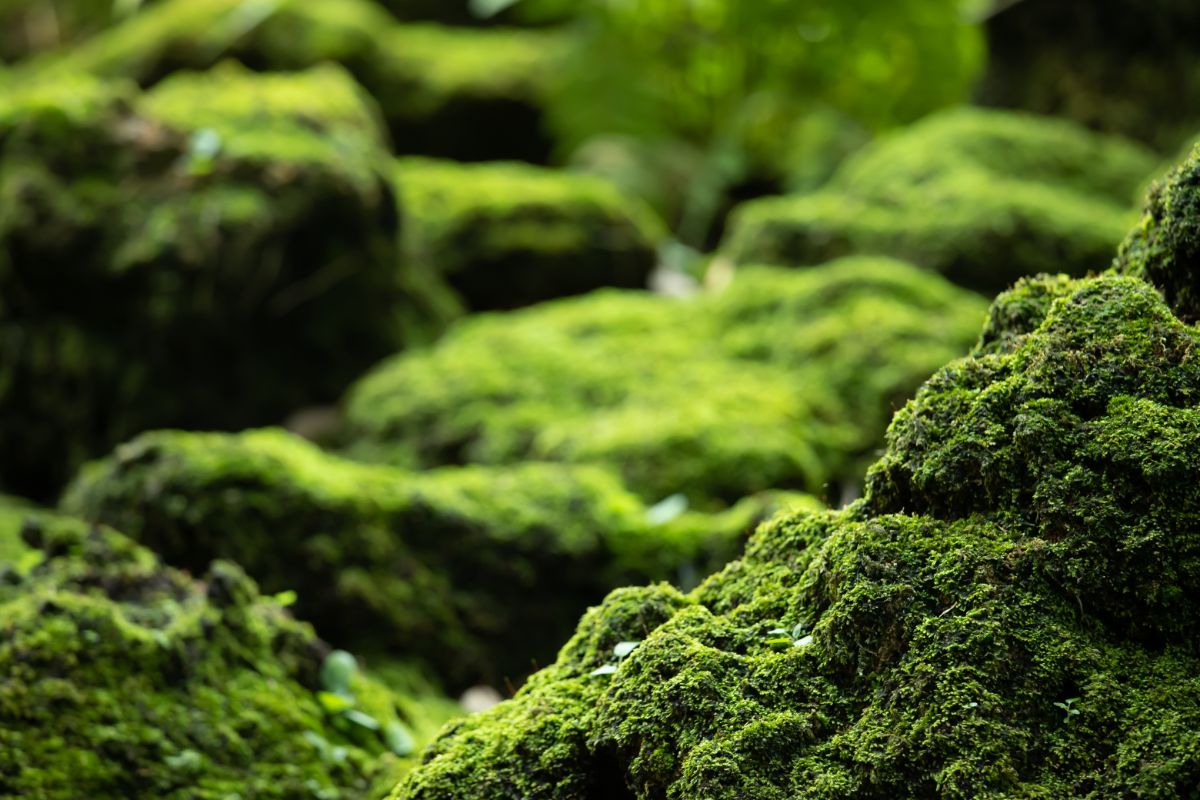
| Plant name: | Mosses |
| Lighting requirements: | Part shade (most varieties) |
| Water requirements: | High |
| Growing zone: | Depends on variety |
| Special features: | Low maintenance groundcover; Great for moss or rock gardens |
Moss is an often overlooked plant, but it can create a big impact in garden spaces when grown en masse. Mosses can come in many different colors, and they can form a thick carpet of green in shady locations, or they can be used to add color to garden walkways. Intentionally planting moss around stonework can reduce weeding needs too, which is a definite plus!
While you can plant small quantities of moss, if you’d like to really “wow” garden visitors, you can plant an entire moss garden and allow moss plants to creep over boulders, planting pots, and more. Moss can be carefully foraged from your yard, or you can purchase live moss plants by the square foot from specialized nurseries. In general, mosses need a fair amount of water, so be prepared to water often or plant them in a section of your yard that naturally stays damp.
5. Garden juniper (Juniperus procumbens)
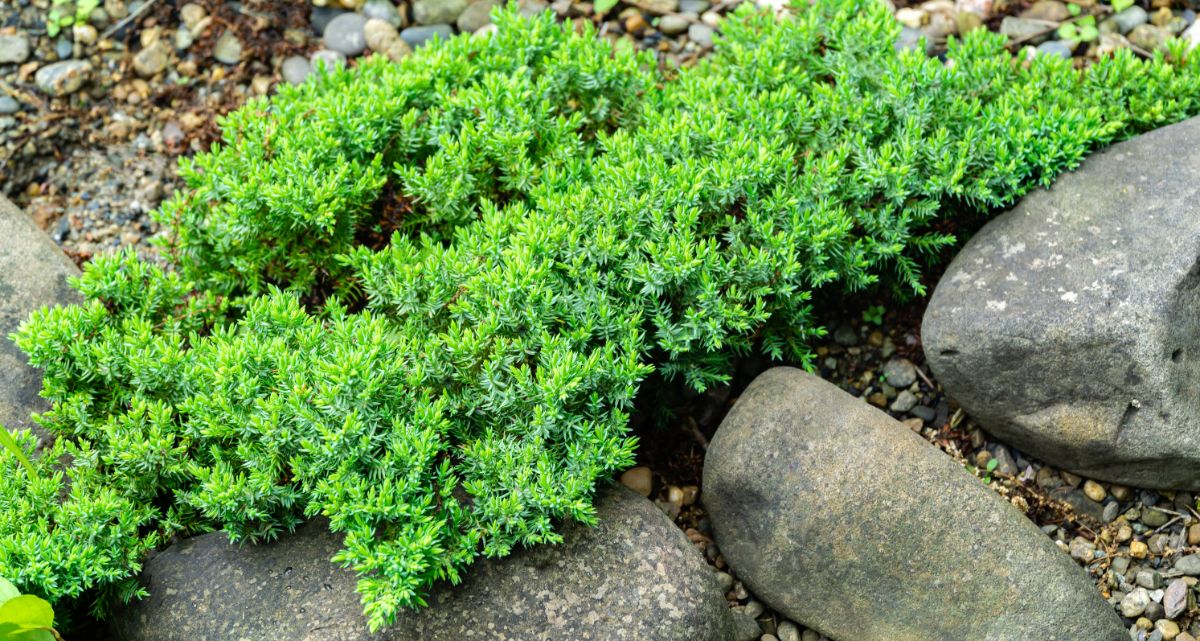
| Plant name: | Garden juniper |
| Lighting requirements: | Full sun, may benefit from part afternoon shade in hot climates |
| Water requirements: | Moderate to low |
| Growing zone: | Zones 2 to 6 |
| Special features: | Low maintenance groundcover |
Like other evergreens, garden juniper keeps its needles throughout the winter and will add color to your garden regardless of the season. That said, garden juniper is a relatively unique plant that grows quite low to the ground and rarely reaches over 12” high. This plant does spread horizontally, though, and it can grow between 5 to 6’ in width.
Because of its unusual growth habit, garden juniper is perfect for filling in bare spots in garden beds or along walkways. It can be used as a low-maintenance groundcover too. Soil type doesn’t matter much with this plant as it can grow in a range of conditions, including rocky gardens, and it handles drought like a champ too!
6. Ornamental grasses
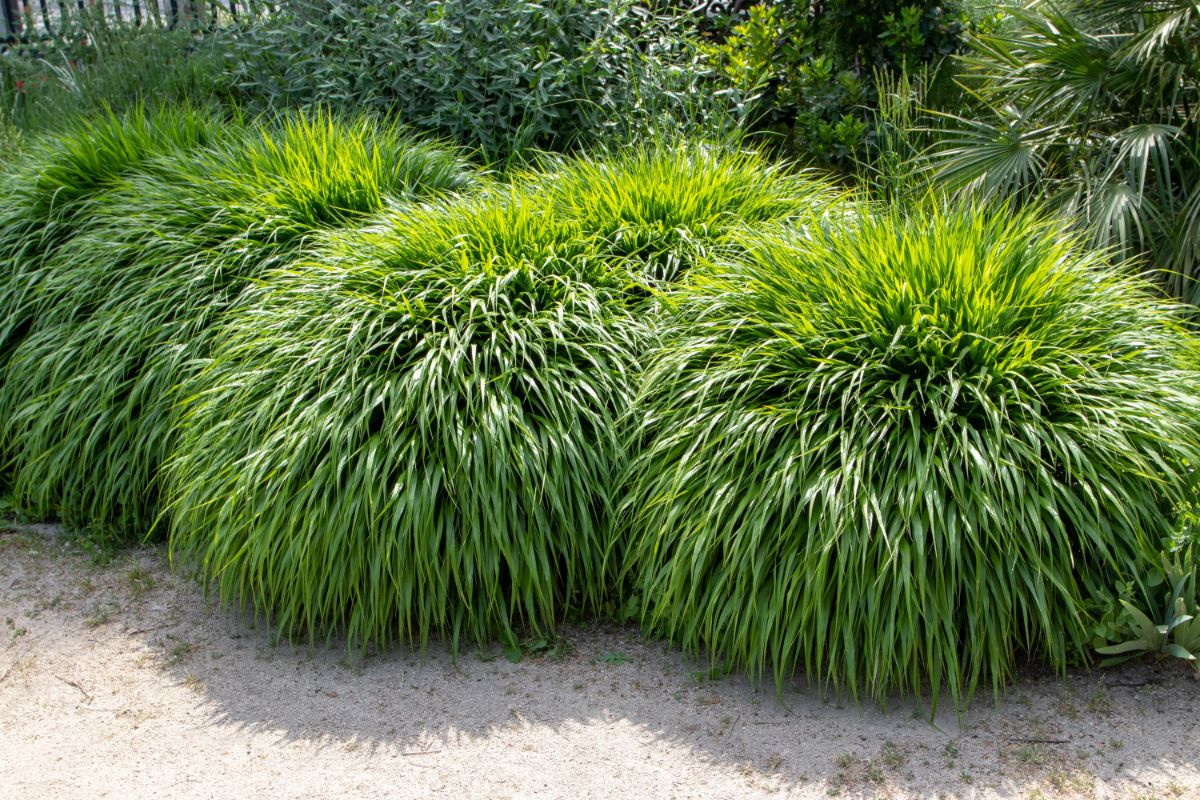
| Plant name: | Ornamental grasses |
| Lighting requirements: | Depends on variety |
| Water requirements: | Depends on variety |
| Growing zone: | Depends on variety |
| Special features: | Year-round color; Sound element |
There are so many different ornamental grasses to choose from that it can be difficult to pick which one you want to grow! Japanese forest grass (Hakonechloa macra) and Mondo grass (Ophiopogon japonicus) are two popular options for Japanese gardens, but you may find other ornamental grass that you like at your local plant nursery. Different grasses come in different colors, and some are better suited to shady yards, while others thrive in sun.
In a Zen-type garden, ornamental grasses can delight all of the senses. Their colorful leaves will add texture to garden beds, and they can be used to soften the lines around walkways and other important features. Not to be overlooked, ornamental grasses will also produce a delightful rustling sound when the wind blows, which can be soothing at the end of a long day of garden work!
7. Azalea (Rhododendron spp.)
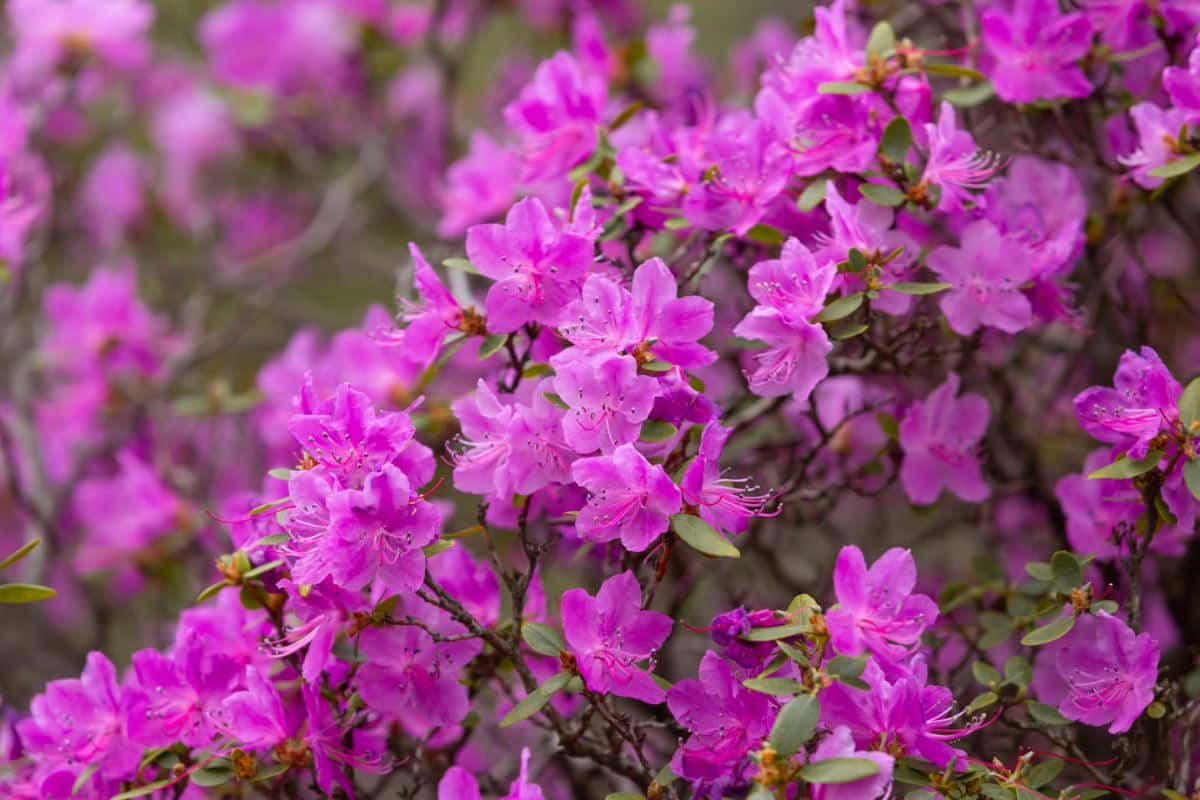
| Plant name: | Azalea |
| Lighting requirements: | Full sun to part shade |
| Water requirements: | Moderate |
| Growing zone: | Zones 6 to 9 |
| Special features: | Colorful flowers; Great for pollinators |
Azaleas have been stapled plants in Japanese garden designs for generations, and they are particularly prized for their bright, trumpet-shaped flowers that bloom in spring. In recent years, plant scientists have been hard at work developing new azalea varieties with special characteristics. This includes reblooming azaleas, like “Encore” azaleas, which are particularly popular as they bloom in spring and again in autumn for year-round color!
Azalea flowers come in lots of different hues, including white, magenta, salmon, and red. Beneath their flowers, azaleas have small, evergreen leaves that will add color to your garden in winter. These plants are also very attractive to hummingbirds and other pollinators that love to lap up nectar from azalea flowers.
8. Hosta (Hosta spp.)
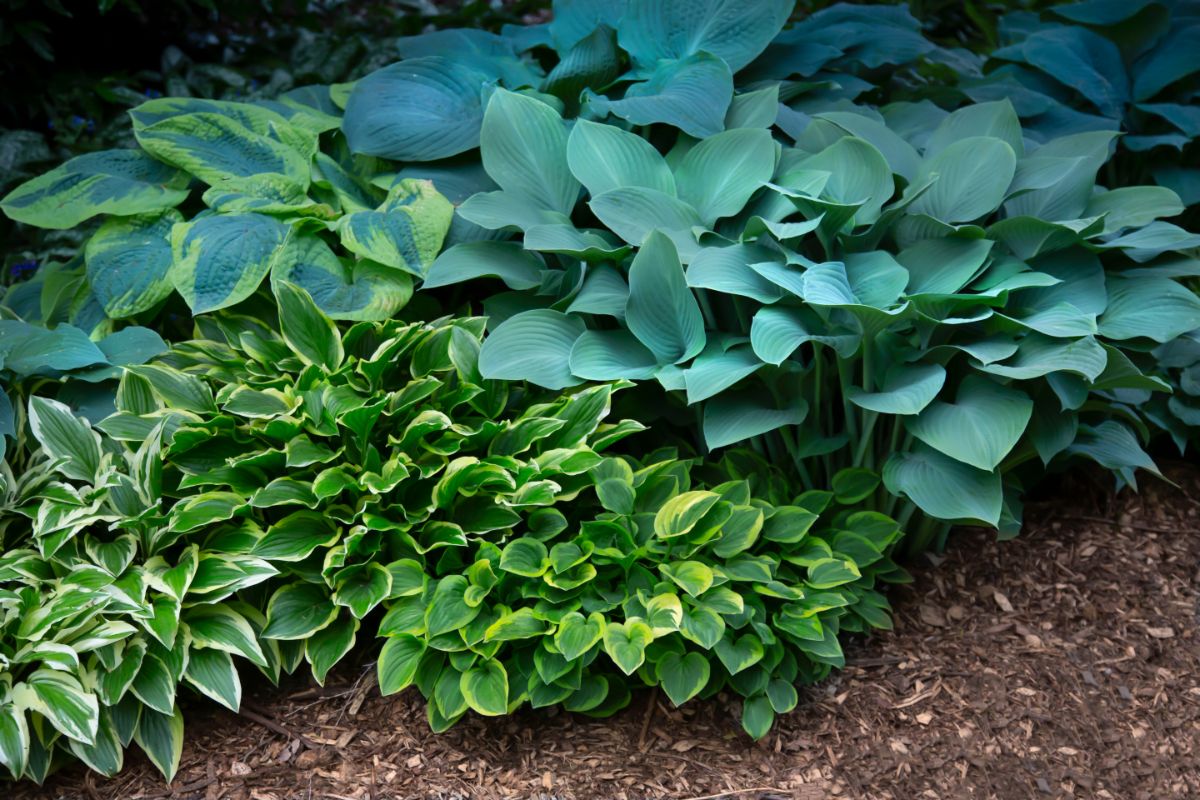
| Plant name: | Hosta |
| Lighting requirements: | Part shade |
| Water requirements: | High to moderate |
| Growing zone: | Zones 3 to 9 |
| Special features: | Colorful leaves; Edible; Great for shade gardens |
Like ferns, hostas are a good plant to add to shady gardens as these plants don’t tolerate bright light well. But if you provide them with the right growing conditions, hostas are incredibly easy to keep, and they will reward you with an abundance of colorful leaves throughout the season. Hostas can be found in solid green and variegated colors, and they also come in a range of sizes to suit any garden space.
The secret to keeping hosta plants happy is to provide them with plenty of moisture. A well-watered hosta will grow and grow and eventually produce tall, tubular flowers in white and pale purple, which are a hit with bees! Also known as “plantain lilies,” hosta plants are edible, and they can be cooked like cabbage.
9. Bamboo (Bambusa spp.)

| Plant name: | Bamboo |
| Lighting requirements: | Full sun (most varieties) |
| Water requirements: | High |
| Growing zone: | Zones 3 to 10, depending on variety |
| Special features: | Excellent garden privacy; Sound element |
Bamboo is another classic choice for Japanese gardens, and this plant has a lot to offer! Like ornamental grasses, bamboo is lovely to look at, but it also makes interesting sounds when the wind blows. Bamboo can be a great choice for encircling a section of your garden that you’d like to keep private for meditation or quiet contemplation.
There are many different types of bamboo to choose from, but we recommend that you grow clumping varieties (Fargesia)rather than running bamboo types (Phyllostachys). Running bamboo can be invasive in some areas, and it may even be prohibited to grow. Clumping bamboo, on the other hand, is much more easily contained, and some types can even be grown in pots!
If you like the idea of keeping bamboo, look for varieties like Buddha Belly bamboo (Bambusa ventricosa) or Dragon bamboo (Fargesia dracocephala), which are hardy and attractive specimens.
10. Peony (Paeonia spp.)
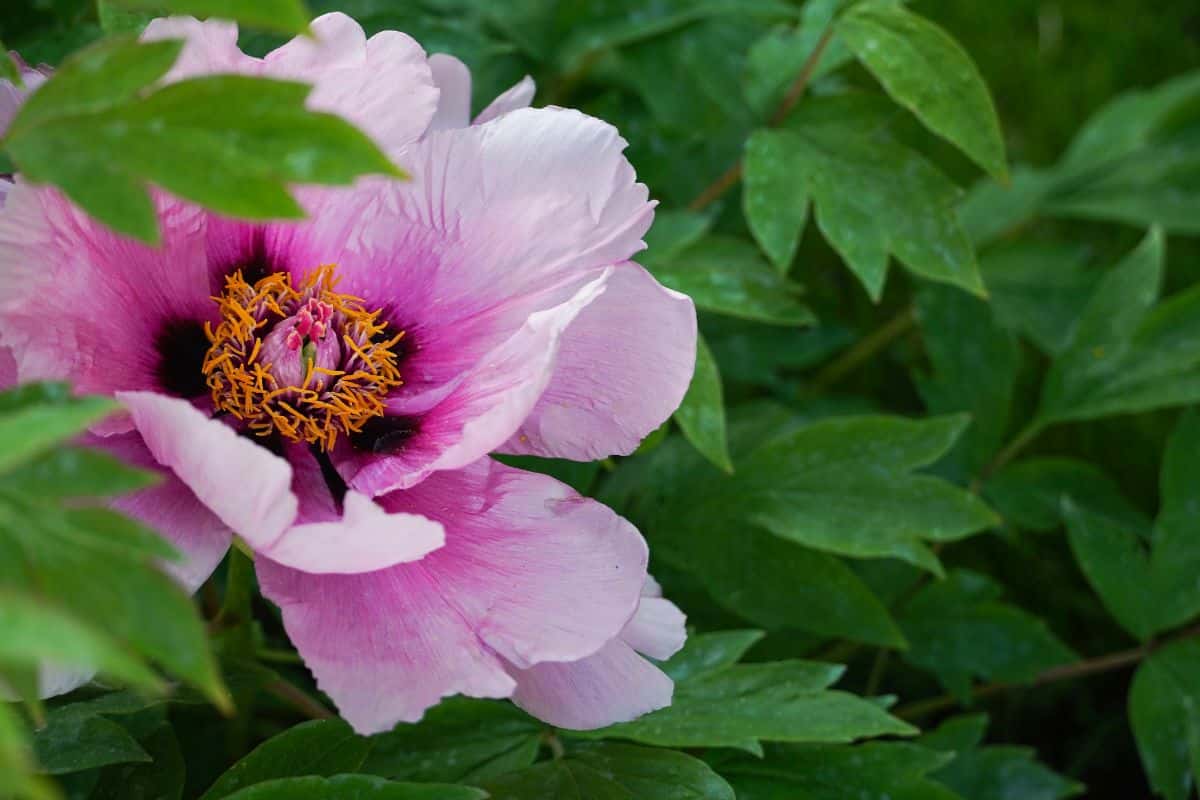
| Plant name: | Peony |
| Lighting requirements: | Full sun |
| Water requirements: | Moderate |
| Growing zone: | Zones 3 to 8 |
| Special features: | Colorful, fragrant flowers; Great for pollinators |
Peonies are native to Asia and Europe, and they have been cultivated for thousands of years. Well known for their fragrant and showy flowers, peonies bloom in late spring to early summer, with flowers coming in pinks, white, yellows, and reds.
It’s a common misconception that ants are required to open peony flowers. While this isn’t true, you may still find ants on your peonies, but they are just helping to protect your plants from pests!
Peonies are highly symbolic plants that have been used to signify good fortune, which helps explain why peonies were often used to decorate pottery in the past. Today, peonies are grown as ornamentals, and they make perfect-cut flowers too. Just be sure to provide your plants with enough growing space and water your peonies at the soil line to prevent powdery mildew.
11. Hinoki cypress (Chamaecyparis obtuse)
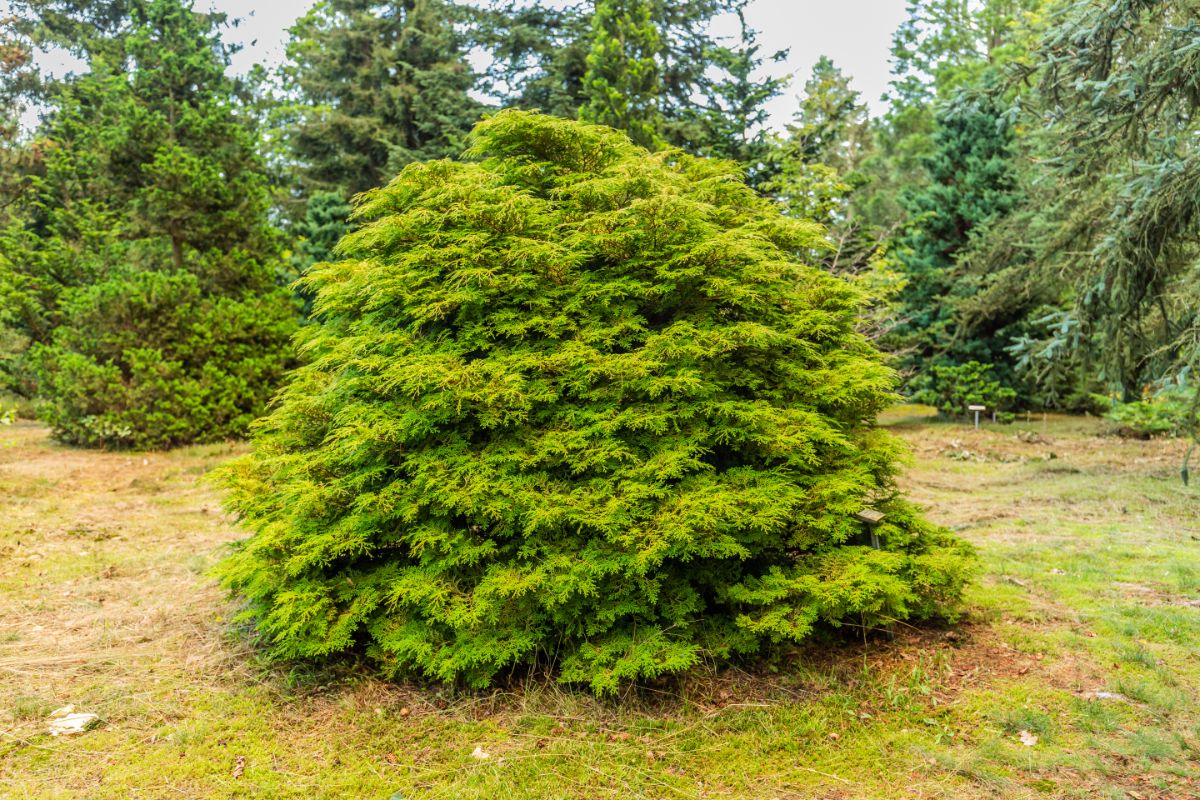
| Plant name: | Hinoki cypress |
| Lighting requirements: | Full sun |
| Water requirements: | High to moderate |
| Growing zone: | Zones 5 to 8 |
| Special features: | Excellent garden privacy; Good for bonsais |
The Hinoki cypress is a dense, evergreen tree that is commonly grown in Japanese gardens. Full-sized hinoki cypress can get quite large and grow well over 25’ tall; however, you can find dwarf hinoki cypress that can easily fit into smaller garden spaces. Because of their size and growth pattern, hinoki cypress are often used as privacy screens or specimen plants, but dwarf varieties make excellent bonsais too!
Growing best in full sun, hinoki cypress will thrive in moist and slightly acidic garden beds. While hinoki cypress are generally undemanding plants, they may benefit from occasional pruning in summer to remove wayward stems. These plants are also hardy to zone 5, which means they are appropriate for cool-weather gardens!
12. Japanese quince (Chaenomeles japonica)
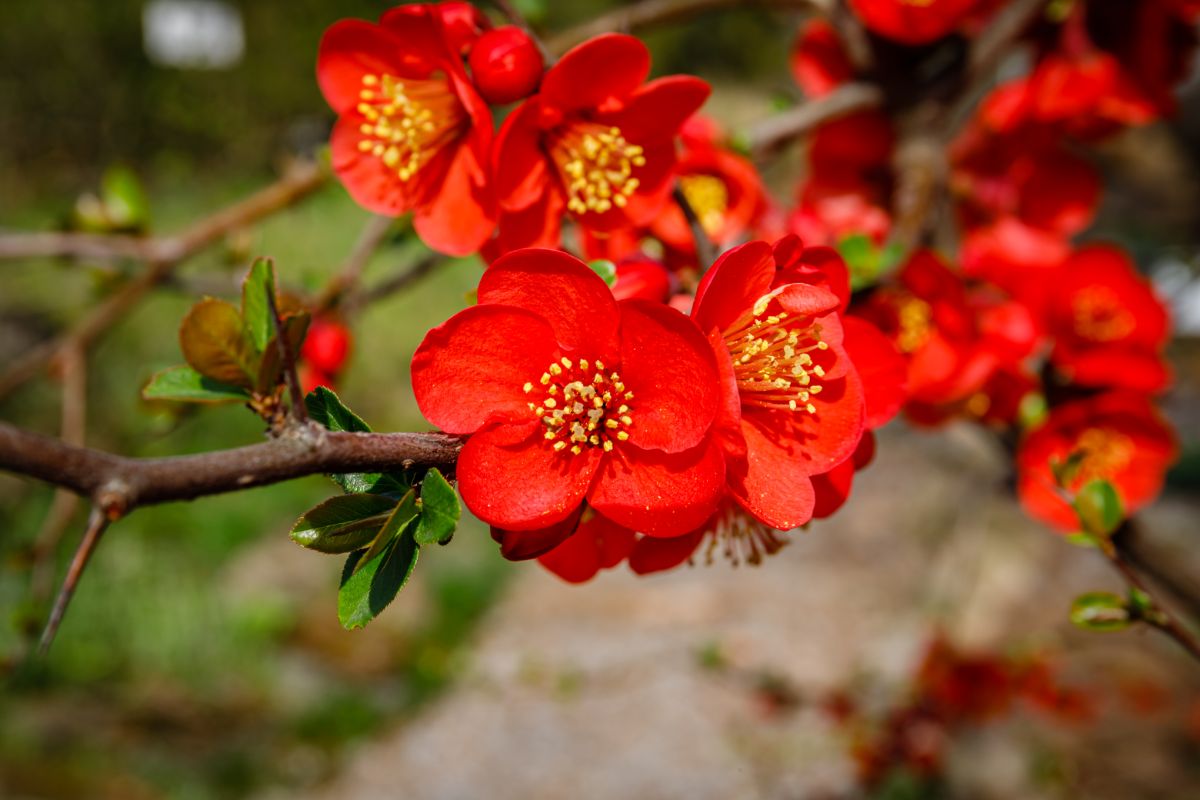
| Plant name: | Japanese quince |
| Lighting requirements: | Full sun |
| Water requirements: | Moderate to low |
| Growing zone: | Zones 5 to 9 |
| Special features: | Colorful flowers; Edible |
Quince belongs to the rose family and produces edible fruit that can be used like apples; however, they have a tart flavor and a dense texture. For this reason, quince fruit is often cooked into jams and jellies or baked into pies. But beyond their edibility, there are other reasons why you may want to add quince to your garden.
Japanese quince are small, deciduous shrubs that grow to about 3’ tall by 6’ wide. In spring, these plants bloom bold, scarlet-red flowers that eventually mature into edible quince fruit. Quince are adaptable plants that can grow in full sun or part shade, and they can tolerate drought and clay soils too!
13. Pine (Pinus spp.)
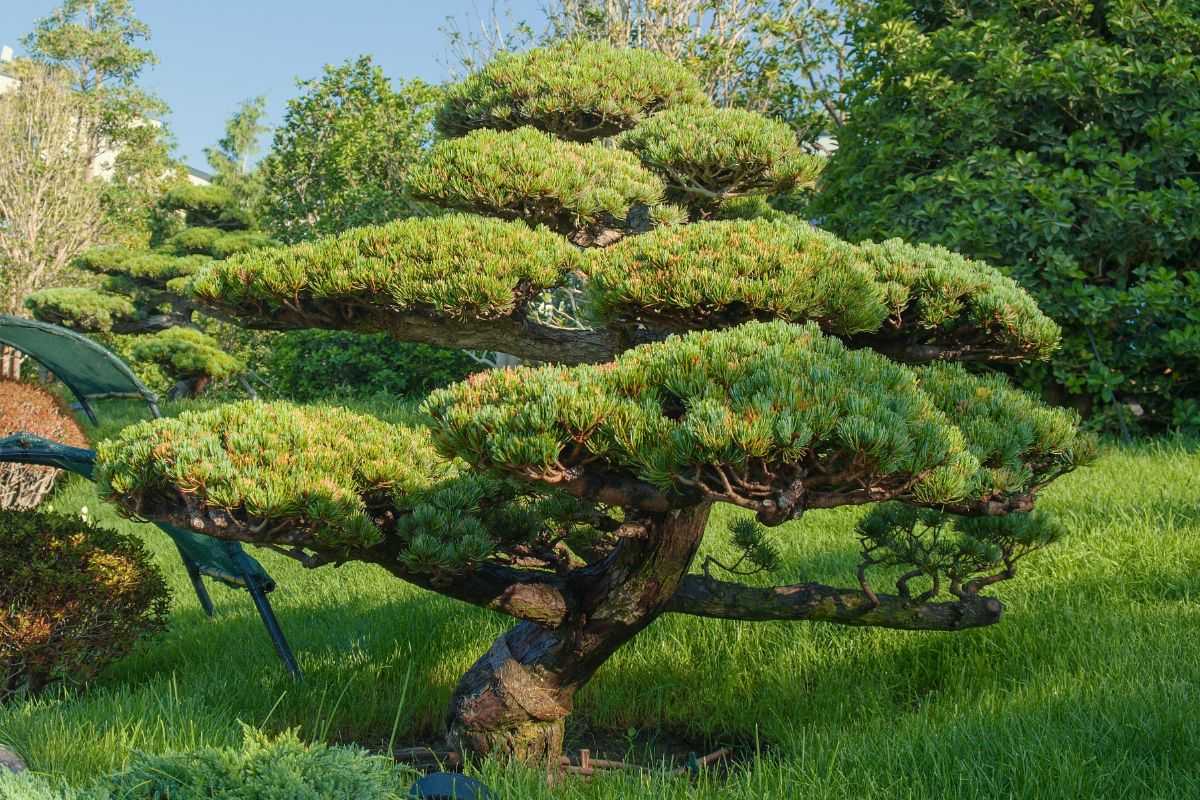
| Plant name: | Pine |
| Lighting requirements: | Full sun (most varieties) |
| Water requirements: | Moderate to low |
| Growing zone: | Zones 2 to 10, depending on variety |
| Special features: | Excellent garden privacy; Ideal shelter for wild birds |
Pine trees will provide year-round color to your garden thanks to their evergreen, needle-shaped leaves. Plant pines around the exterior of your garden to form a sheltered and private oasis, or grow a single pine tree as a specimen plant. It’s up to you!
Today, there are over 120 different recognized varieties of pine, including the ever-popular white pine, which has long and elegant needles, or the jack pine, which is extra cold hardy. These adaptable plants can grow in a wide range of environments, and their dense branches provide much-needed shelter for wild birds during winter.
14. Iris (Iris ensata)
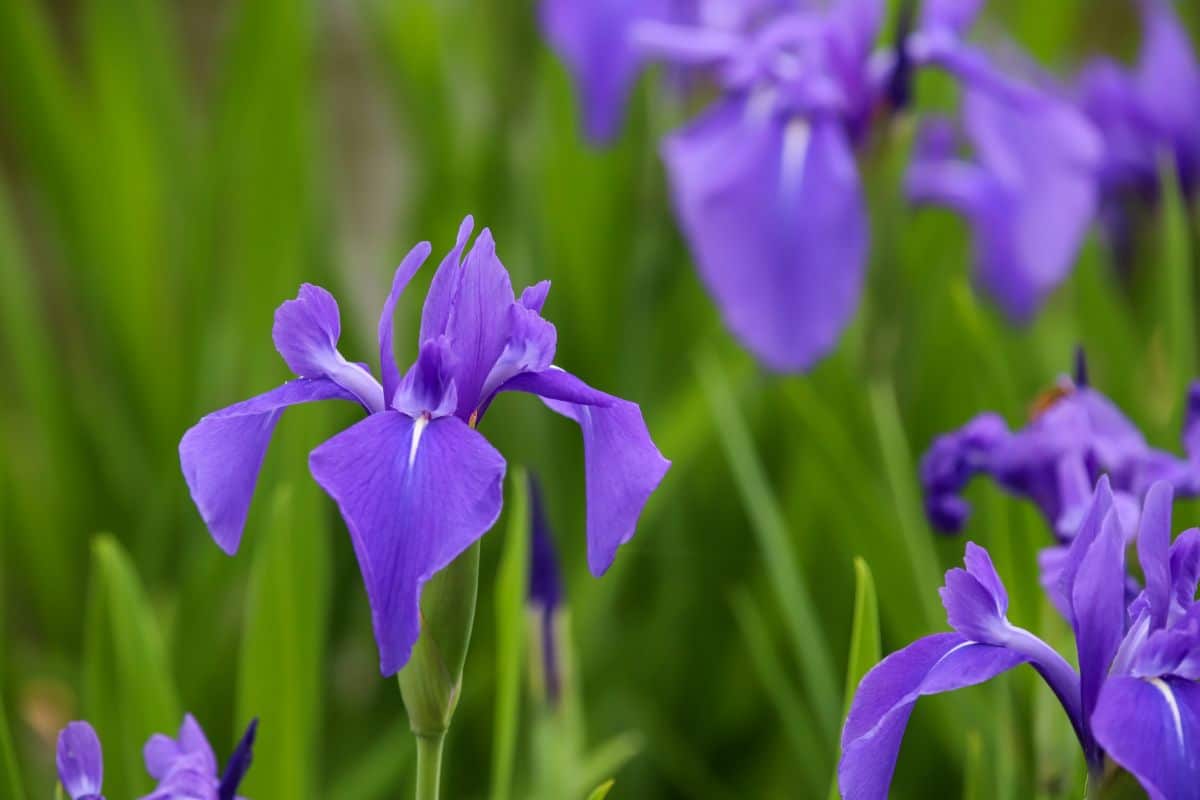
| Plant name: | Iris |
| Lighting requirements: | Full sun |
| Water requirements: | High |
| Growing zone: | Zones 4 to 9 |
| Special features: | Colorful flowers; Great for cut flowers; Good for water gardens |
Irises are elegant plants that can work well in most garden designs, and they are well-suited for Japanese-style gardens too. These plants bloom in mid-summer and produce colorful flowers in pink, white, blue, and purple. Flower stalks can grow up to 5’ tall and are sturdy enough to use in cut flower displays if you like to make homemade bouquets.
Irises tend to prefer moist soil, so if you have a section of your lawn that stays damp, you may want to try growing irises there. Japanese irises can also be used to accentuate water features, like small ponds or streams. After sowing, irises are pretty easygoing plants that need minimal care, but they should be divided every 3 to 4 years to prevent plants from getting overcrowded.
15. Lotus (Nelumbo spp.)
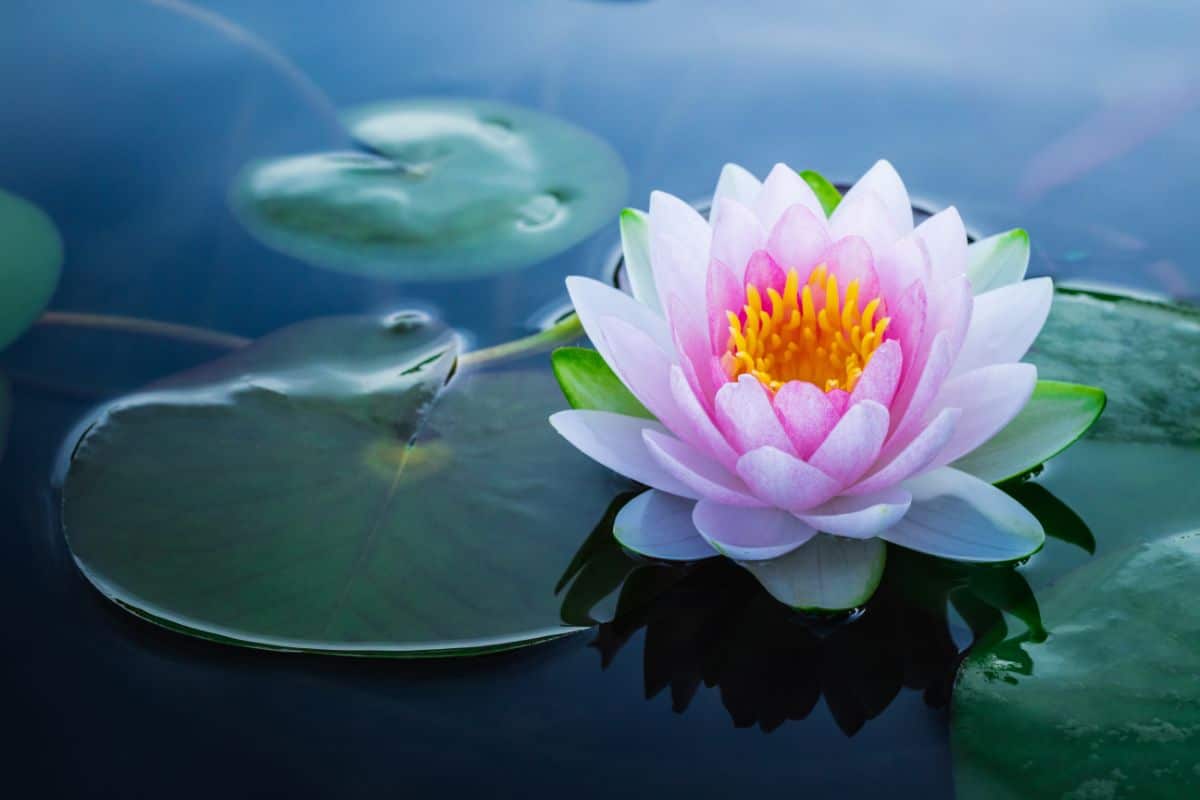
| Plant name: | Lotus |
| Lighting requirements: | Full sun |
| Water requirements: | High |
| Growing zone: | Zones 5 to 10 |
| Special features: | Colorful flowers; Good for water gardens |
Lotuses are delicate yet impressive plants that grow out of the thick mud of ponds and pools to bloom into some of the most bewitching and colorful flowers you can find. The growth habit of lotuses helps explain why these plants are often used symbolically in landscape designs to represent transcendence. Lotus flowers bloom in mid-to-late summer and can be found in colors ranging from white and pink to yellow and blue.
While not all gardens have the space for lotuses, if you happen to have a small pond or water feature, you definitely want to grow a few lotuses. You can find lotuses in different sizes, including massive lotus varieties with 3’ diameter leaves! For smaller garden spaces, look for dwarf lotus cultivars, such as ‘Baby Doll,’ which stay much smaller.
16. Japanese wisteria (Wisteria floribunda)
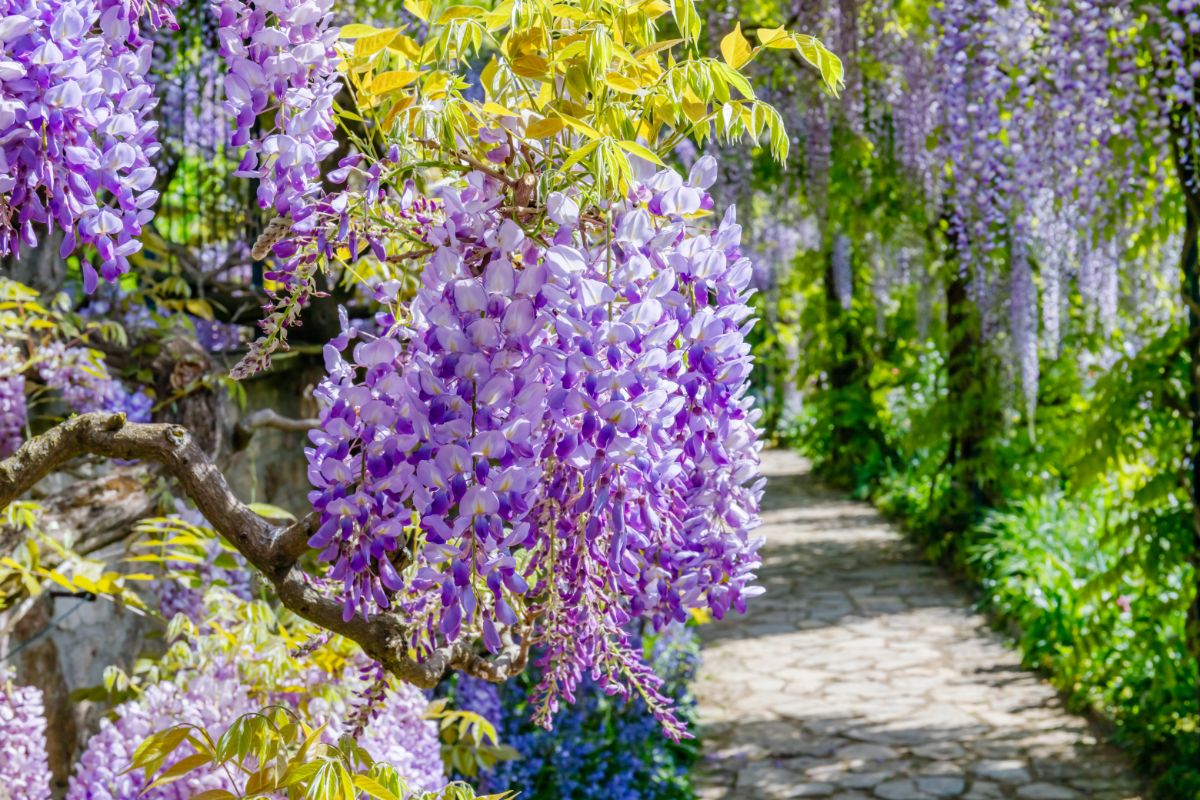
| Plant name: | Japanese wisteria |
| Lighting requirements: | Full sun to part shade |
| Water requirements: | Moderate to low |
| Growing zone: | Zones 4 to 9 |
| Special features: | Colorful flowers; Climbing vine great for vertical gardens and archways |
Japanese wisteria are vigorously growing plants that can add lots of height and drama to garden displays. You can train vines to climb up trellises and garden archways, or you can encourage plants to maintain a more upright growth habit with biannual pruning to shape your wisteria into a small tree form. However you choose to grow wisteria, this plant is certain to impress when it blooms large and airy purple flowers in spring.
Wisteria can be invasive in some areas, so it’s important to keep growth in check by pruning your plant. The best time to prune wisteria is after the flowers fade. When this occurs, prune the plant back close to the support structure to maintain tidier lines and ensure that next season’s flowers will be well exposed.
17. Japanese boxwood (Buxus microphylla)
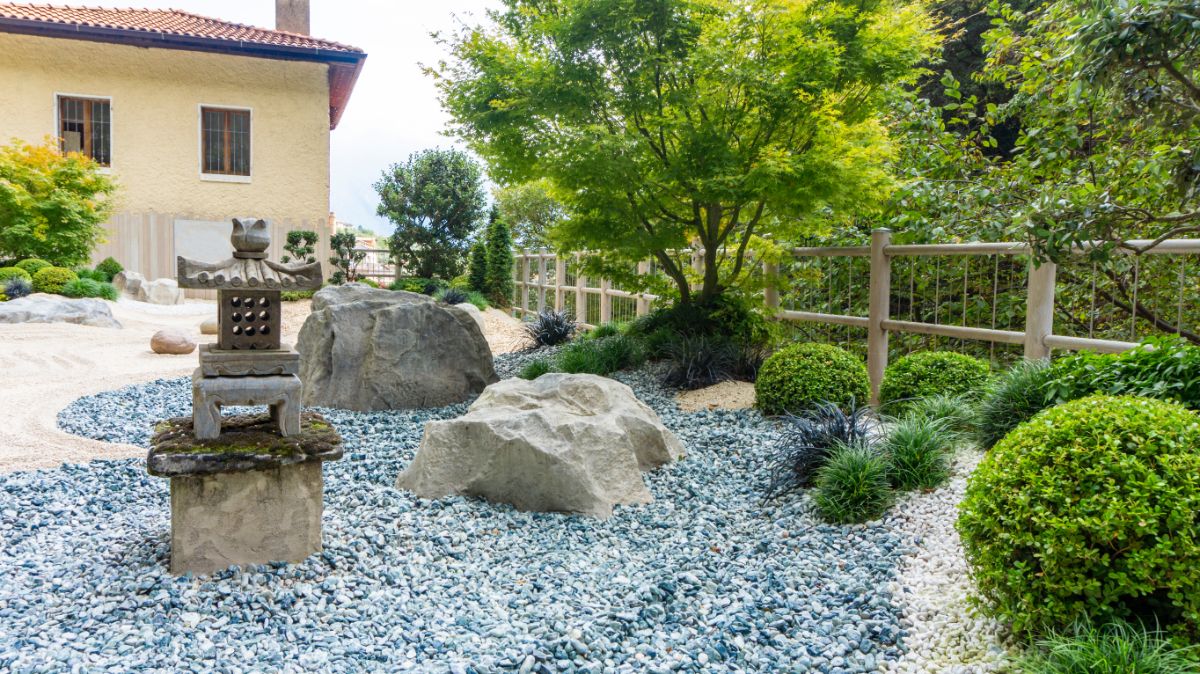
| Plant name: | Japanese boxwood |
| Lighting requirements: | Full sun to part shade |
| Water requirements: | Moderate to low |
| Growing zone: | Zones 6 to 9 |
| Special features: | Excellent garden privacy; Good for bonsais |
If you want to add a hedgerow to your garden or you’re craving extra privacy, Japanese boxwood is one of the top plants to keep. This low-maintenance specimen plant can be easily pruned into creative shapes and bonsais or allowed to grow naturally. These plants can grow between 5 and 6’ tall and should be spaced at least 4’ apart in hedges.
Boxwoods can be pruned throughout the year to improve their look, but it’s best to avoid pruning in autumn to avoid unnecessary plant stress. While boxwood is mostly known for its glossy and rounded, evergreen leaves, these plants also flower in spring. Flowers are small and pale green to white in color, and they emit a resinous fragrance that is quite distinct!
18. Camelia (Camelliajaponica)
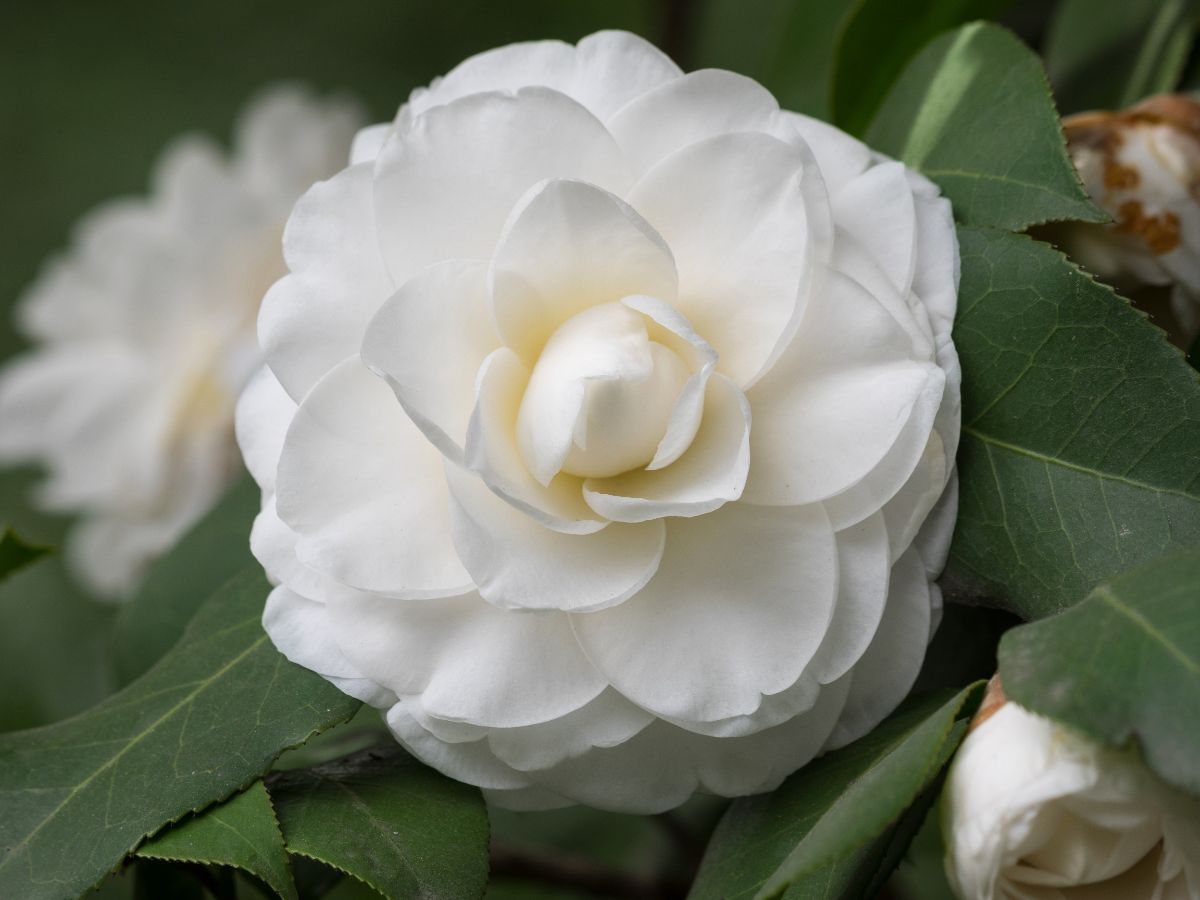
| Plant name: | Camelia |
| Lighting requirements: | Full sun to part shade |
| Water requirements: | High |
| Growing zone: | Zones 7 to 9 |
| Special features: | Colorful flowers; Great for pollinators |
Japanese camelias are gorgeous plants that will be the centerpiece of any garden design, and they are especially suited for Japanese gardens. These slow-growing plants can live for hundreds of years, so they are definitely an investment plant! While you’re sure to appreciate their glossy foliage, camelia flowers are the real stars of the show, and they come in lots of colors, including pink, red, and white.
When fully mature, Japanese camelia will grow to between 6 and 12’ tall. These heat-loving plants are only hardy to zone 7, but they can be overwintered indoors in colder areas. This is because camelia plants grow wonderfully in pots, just as long as they have adequate drainage holes.
Summary
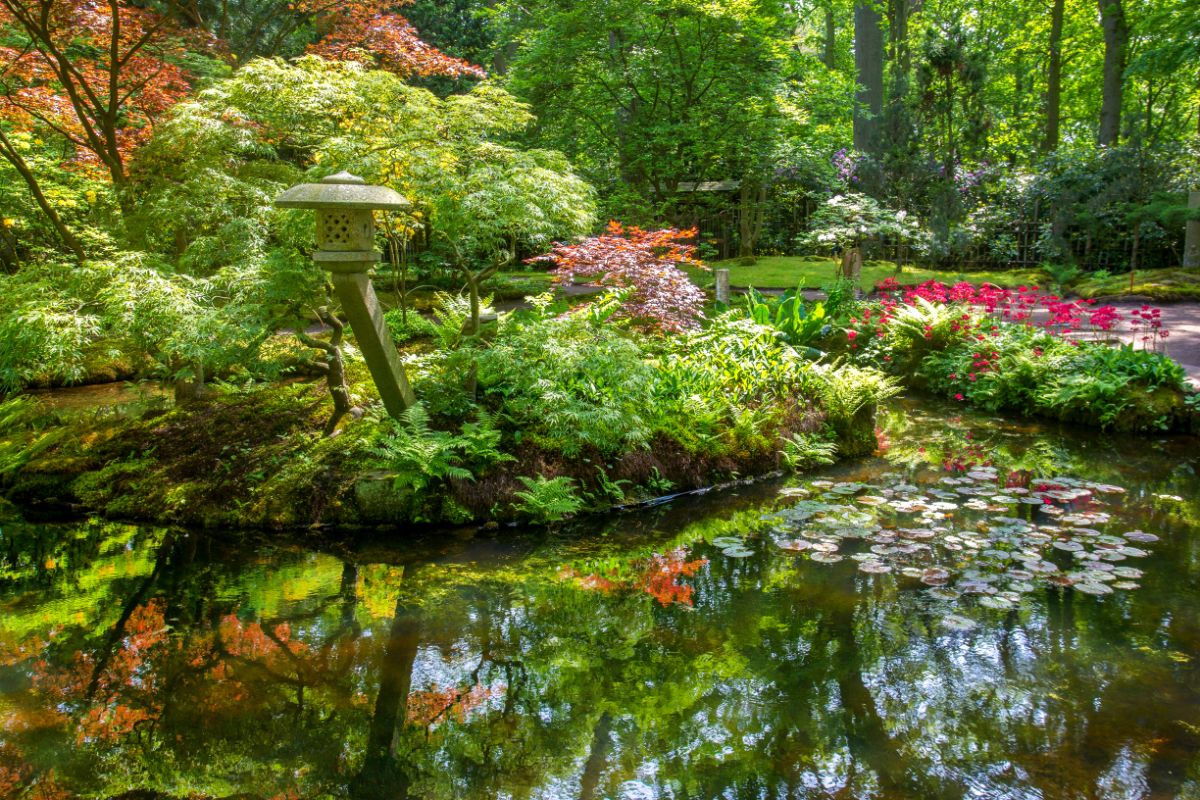
Gardens are some of the best places to visit when you want to retreat from the busy world around you and take a quiet moment to yourself. While any garden can fill you with a sense of peace and relaxation, Japanese gardens are specifically designed to form an oasis from the world. These gardens are carefully crafted with simplicity in mind and adorned with well-chosen plants that offer simple lines and an assortment of textures and subtle colors.
Choosing the right plants is one important step toward developing an elegant and impressive Japanese garden design. But if you want to elevate the look of your garden even further, you may want to add a water feature too. Learn how to craft your own bamboo water fountain with our easy tutorial.

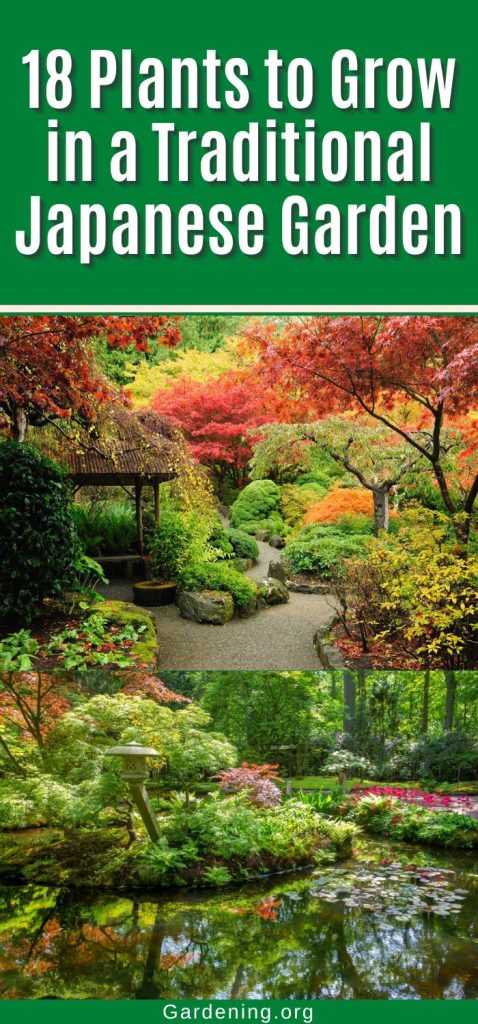
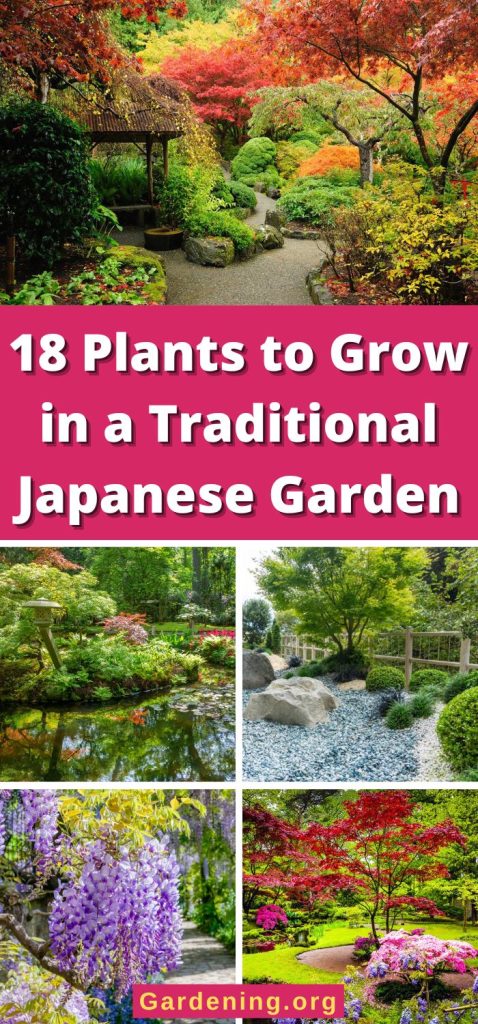
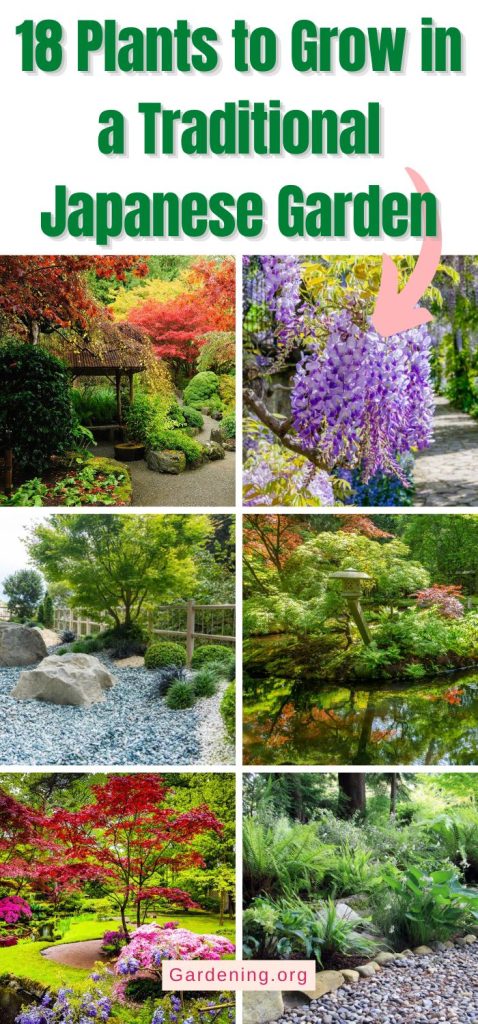
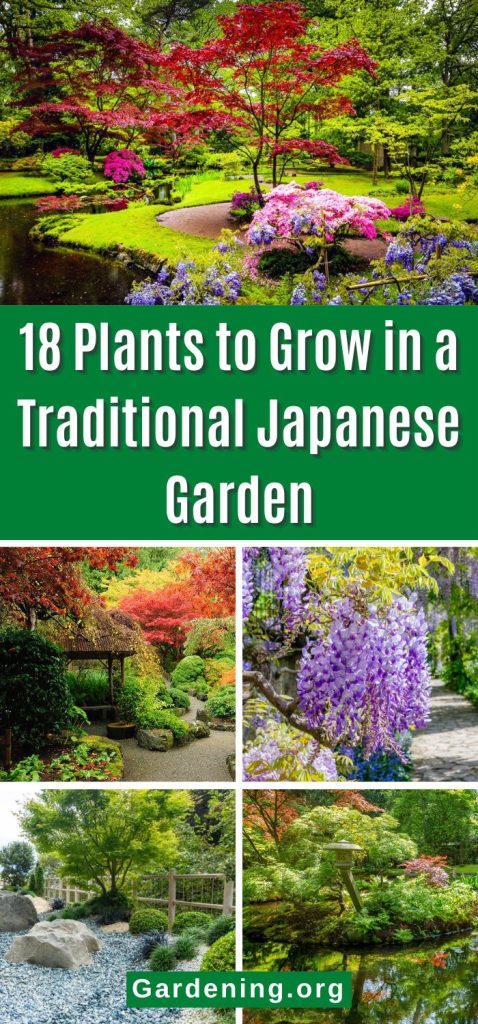

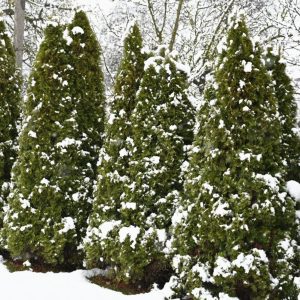


Dana Daniels
Where can I get a wisteria?
Mary Ward
Many sellers, but you should be able to find it online.
Melody Fleck
This article is so informative and inspiring. Great ideas and pics. Thank you!
Bron
Camellias especially the sasanquas but also even japonicas and hybrids grow well here in sub tropical Queensland Australia. They just need to be well watered when young plants,
and for japonicas find or make a microclimate where they will get some summer protection.
Also Louisiana irises are a good choice for gardens too warm for japanese iris or bearded iris.
I have a self sown lemon scented tea tree (Leptospermum) that has a gnarled and rangey bonsai appearance. The birds love it.
Mary Ward
Thank you for your additions. Always nice to hear what works well in different areas of the world!